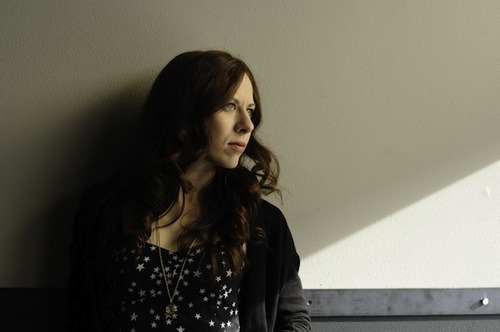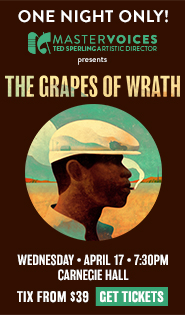The strength and beauty of Missy Mazzoli’s music shine at Miller Theatre

Missy Mazzoli’s music was featured in the “Composer Portrait” series Thursday night at Miller Theatre.
Missy Mazzoli is one of the finest composers of her current generation. That has almost nothing to do with age—though it’s notable that she has many years to go before she reaches forty—and almost everything to do with how her musical values relate to her peers.
History and style place her among the post-minimalists who use repetitive means and classic, tonal harmonies. But while many of her peers are self-consciously chasing after hipster-pop relevance, Mazzoli is composing substantial pieces that can appeal to those listeners without pandering to them. Her work is clear and uncompromising, and even when it is not at its best, she never plays to the crowd.
Thursday night’s strong “Composer Portrait” concert at Miller Theatre showed this in spades. What stands out in particular with Mazzoli’s music is her taste for harmony, and her skill with it. She uses repetition, but instead of even units and obvious beats, repetition works with lines and chords to build form through harmonic rhythm. Her harmonies have a rich tension, like the string of an archer’s bow, and her expression has the same sharp, direct force that comes from the tip of the arrow.
All the music was for strings, played by the Mivos and ETHEL string quartets and soloists. There were also two compositions that included voice, and several that had a sample-based audio track. The solo pieces, Dissolve O my Heart for violin and Tooth and Nail for viola with audio track, were the best of the best.
Back in November, violinist Anna Rabinova played Dissolve at a New York Philharmonic CONTACT! concert, and the music did not leave a deep impression. The piece was commissioned by Jennifer Koh as a response to Bach’s Chaconne, and Rabinova played it like it was Bach.
Although Mazzoli told Miller’s executive director Melissa Smey, in a post-intermission conversation, that there is a consistent thread through her music that “connects to the baroque era,” and specifically Bach, it turns out that Dissolve also connects immediately to Michael Gordon’s masterpiece for cello and tube screamer, Industry. At Miller, violinist Robert Simonds played Dissolve, but instead of exploring how one chord led to the next and fit into the overall form, he presented them as blunt objects of sound. With that attitude, the music is gripping, and Mazzoli’s command of form delivers the satisfaction of harmonic resolution without having to spell out the chordal movement.
Nathan Schram played Tooth and Nail, and showed off a laconic stage confidence when there were initial technical problems with the audio track—made out of processed viola samples. This piece sounds like a deliberate response to Steve Reich’s soloist/tape compositions, but the violist’s repetitions are recursive, building a foundation for some gorgeous lyricism. The music also shows what Mazzoli didn’t say, that her ideas about counterpoint go back to the Renaissance; rather than vertical rhythmic alignment, her lines move at different speeds, which builds a strong pulse and an unusually ascetic sense of atmosphere.
That balance of color and structure was eminently powerful in her string quartet pieces: the opening Death Valley Junction, and Harp and Altar (both played by Mivos), and Quartet for Queen Mab, which ETHEL played to close the night. These are fine compositions, hinting at narrative without sacrificing any of the elegance of her abstract structures. Queen Mab—heard in its world premiere—is beautifully made, exploring Mazzoli’s stated interest in baroque ornamentation. The four instruments seem to be in a grand building, and, starting from a central point, move in different directions while together they map their surroundings.
The less successful pieces were A Thousand Tongues, for singing cellist (Jody Redhage) and His Name is Jan, the opening aria from an in-progress adaptation of Lars von Trier’s misogynist kitsch, Breaking the Waves, played by ETHEL and sung by soprano Marnie Breckenridge. A Thousand Tongues also uses an audio track, but the rhythms are too steady and the counterpoint too simplistic relative to Mazzoli’s best music; the result is wan. His Name is Jan is hampered by a sense of obligation towards opera’s dramatic clichés; maybe the obviousness of Royce Vavreck’s bland libretto left her casting about for some way to create effects. The piece misses Mazzoli’s true voice.
The next Composer Portrait is Stefano Gervasoni, 8 p.m. February 19. millertheatre.com


